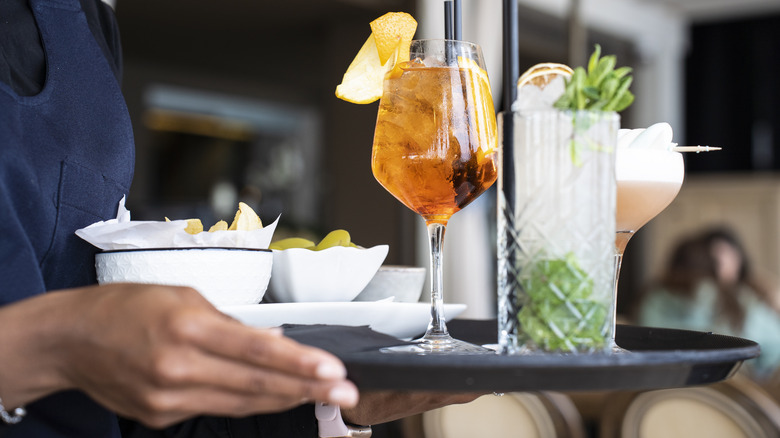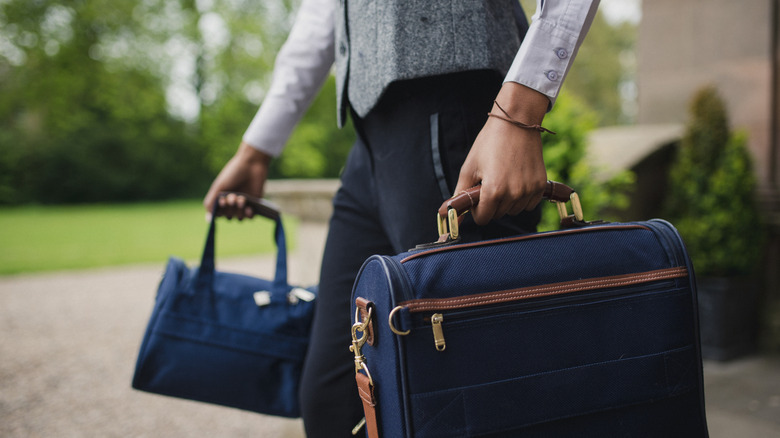Rick Steves' Best Advice Regarding Tipping In Europe Is A Total Sigh Of Relief For Tourists
It's counterintuitive to many Americans that settling a bill at the end of a meal wouldn't include an automatic 20% gratuity. Tipping is deeply ingrained in American culture — so much so that even if you're just ordering a to-go cup of coffee, there's likely a tip jar waiting for your change, or a digital prompt asking you for 18%, 20%, or more in gratuity. While tipping is intended to reward good service, American consumers are getting frustrated with what some have called "tipflation." According to a 2025 survey by finance company WalletHub, about 90% of Americans think tipping has gone too far, dislike the social pressure that tipping in the U.S. has become, and are confused about the increasing prevalence of "service fees," an additional charge many companies have started mandating, with no real explanation of what it's for or to whom it's going. This is apparently not the case in Europe.
When Americans go to Europe, it feels almost wrong to not tip in a similar fashion. Particularly for travelers planning a first-time vacation to Europe, or for those who are simply self-conscious being American tourists, it's easy to make the mistake of overtipping. As always, though, travel expert Rick Steves has good news: In Europe, tipping more than 5% or 10% is not part of the culture, and many locals don't tip at all. In fact, on his website, Steves says it's downright rude to overtip when traveling there, and recommends resisting the urge to be a tourist instead of a traveler. While amounts vary slightly by country, Steves has shared some general guidelines visitors would be wise to note and practice if they truly want to respect the culture they're experiencing. For American visitors tired of "tipflation," this cultural shift can feel like a welcome break.
When to tip for additional services in Europe
Rick Steves assures travelers not to overthink tipping European waitstaff: Servers in Europe are paid a living wage, so tips when dining out at a restaurant are generally small — about 5% to 10% if the service is truly excellent — and considered a bonus. You don't even need to consider tipping if ordering at a counter or a bar — you simply don't need to tip. Additionally, most European credit card slips don't have a line for tips, so when you do tip, plan to use cash.
It's fine to ask a local for advice, but don't ask your server, and Steves says it's more than fine to do as the Europeans do. In fact, he says overtipping "messes up the local balance," in addition to being culturally ignorant and simply bad style. Keep your tips modest, and plan to put the cash directly into your server's hand when you pay the bill.
When it comes to dining at a sit-down table with a server, protocol varies from country to country. Some European countries include a built-in service charge — particularly in heavily touristed areas — often listed as "servizio" (Italy), "service" (France), or "servicio" (Spain) on the menu, meaning a service charge is included and you should not tip. If you see "servizio non incluso," no additional charges are incorporated. Some tourist-centric spots in Germany and Austria have reportedly started adding "tip is not included" to the bottom of the bill, but Steves says this is misleading, pointing out that menus in these countries typically do include service. His advice? "I wouldn't tip one cent more at a restaurant that includes this note on the bill," states Steves.
Tipping for additional services in Europe
If you have doubts about what to tip, Rick Steves suggests asking a local. For example, he points out that in France and England, you would typically tip for a haircut. But if you're in European countries like Sweden or the Netherlands, you wouldn't. There are a few rules of thumb for the general services a traveler needs and how it's generally accepted in European countries.
Chances are you'll be taking some kind of guided tour at least once on your trip to Europe. Steves says he doesn't tip if he's already paid for admission to the landmark or for the tour itself. If the guide was fantastic, €1 or €2 (around $2 to $3) is enough. For a group tour, €2 to €5 (roughly $3 to $6) per person is recommended — the larger the group, the smaller the per-person tip. If you're booking a private guide, €10 to €20 (about $12 to $24) is generally appropriate, but if your guide goes the extra mile in booking tickets or arranging additional amenities, you may want to increase that gratuity.
When it comes to taking a taxi or car service, Steves recommends rounding up to the next euro on the fare for your tip, or to the nearest 10 if it's a larger fare, as long as you feel you're not getting ripped off by one of Europe's common taxi scams. For example, on an €11 fare, pay €12, but for a €65 fare, pay €70. Of course, extra help with bags or an urgent ride to catch a flight might be worth an extra tip, too. In European hotels, if a porter helps with your bags, €1 per bag is appropriate. Leaving a tip for housekeeping when you check out, however, is optional.


